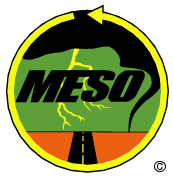A dryline will exist around the western OK/eastern TX panhandle border, extending south of a quasi-stationary baroclinic boundary running from the OK panhandle toward east-northeast into Kansas City. NAM has a bulge in the dryline south of the boundary. Lee troughing also is resulting in enhanced surface flow and some backing of the winds in the warm sector. Winds are particularly backed along the quasi-stationary frontal boundary. Thus, there will be surface boundaries, along with daytime heating, that may allow convection to develop in several locations before the sun sets. Foci of convective initiation may include the dryline bulge just east of Childress, TX and the triple point near the stationary front and dryline intersection in NW OK.
Because of low-level Gulf moisture and warming temperatures, along with cooler temperatures aloft, which are just starting to advect in, the NAM model has CAPEs over 2.5 kJ / kg in the warm sector over OK/southeastern KS.

Enhanced instability will continue to exist as the evening wears on. However, very impressive kinematics move into the warm sector throughout the night. Thus, tornadic supercell conditions will start out very good on Sunday afternoon and end up being very impressive during the nighttime hours. The low-level jet (850 mb flow) should ramp up from about 35 kts at 00 UTC to 55 kts by 06 UTC. As a result of improving flow throughout the evening, 0-3 km SRH improves from >200 J/kg to >500 J/kg over much of the area of interest during the same time period. A significant tornado event will exist with all storms in this region. Long-lived and potentially destructive tornadoes will be highly favored for any supercell that can move along the baroclinic boundary in N central OK into area just around or south of Kansas City, KS. Severe convection should become more widespread in the moving warm sector throughout the night as we head into a potentially more widespread severe weather day on Monday. A great chase scenario, but it might require some nighttime chasing. Regardless, I wouldn't be surprised by daylight tornadoes for the first storms that erupt in the late afternoon/early evening.
C.R. 1:21 pm Saturday.

No comments:
Post a Comment